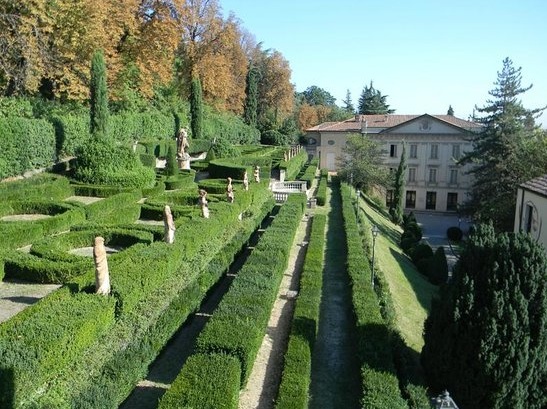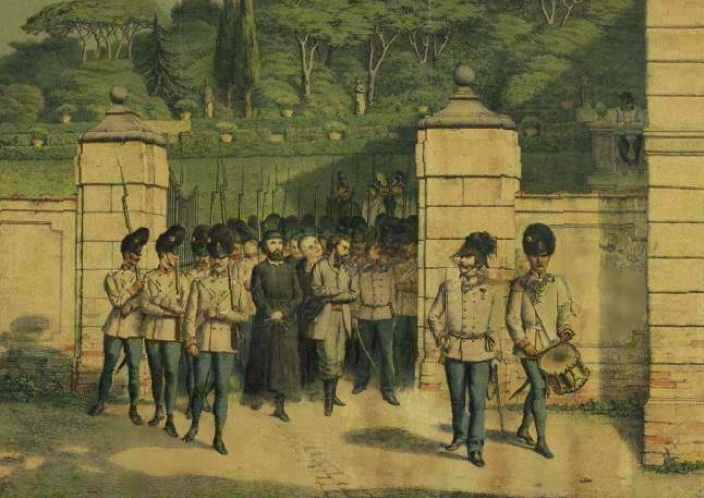- Read offline
- Access all content
- Use the in-app Map to find sites, and add custom locations (your hotel...)
- Build a list of your own favourites
- Search the contents with full-text search functionality
- ... and more!
Museo del Tessuto e della Tappezzeria
Textiles in an 18th-Century Villa

The 18th-century Neoclassical Villa Spada, surrounded by elegant box hedged Italian gardens cascading down the slope, has seen its share of history.
Owned in the early 19th century by the tenor Antonio Poggi, it became Austrian headquarters in Bologna in 1849 and its tower was used as the prison of Garibaldi's fighting priest, Ugo Bassi and his fellow fighter Count Livraghi, who were shot by a firing squad near the villa wall, recognizable in the anonymous painting of the scene.

On the south end of the garden is the city's memorial (1975) to the 128 resistance fighters from the province of Bologna who were similarly executed during the Second World War.
The garden's terracotta statues seem to be showing off their clothes, appropriately enough because the villa, purchased by the city of Bologna in the 1960s, has housed a unique collection of textiles since the 1990s. The Museo Storico Didattico della Tappezzeria is the work of Vittorio Zironi, who came up with the idea of a textile museum while being interned in a prisoner of war camp in Germany and hearing that a similar museum in Berlin had been bombed in the war.
Images by Museo della Tappezzeria, PD Art

